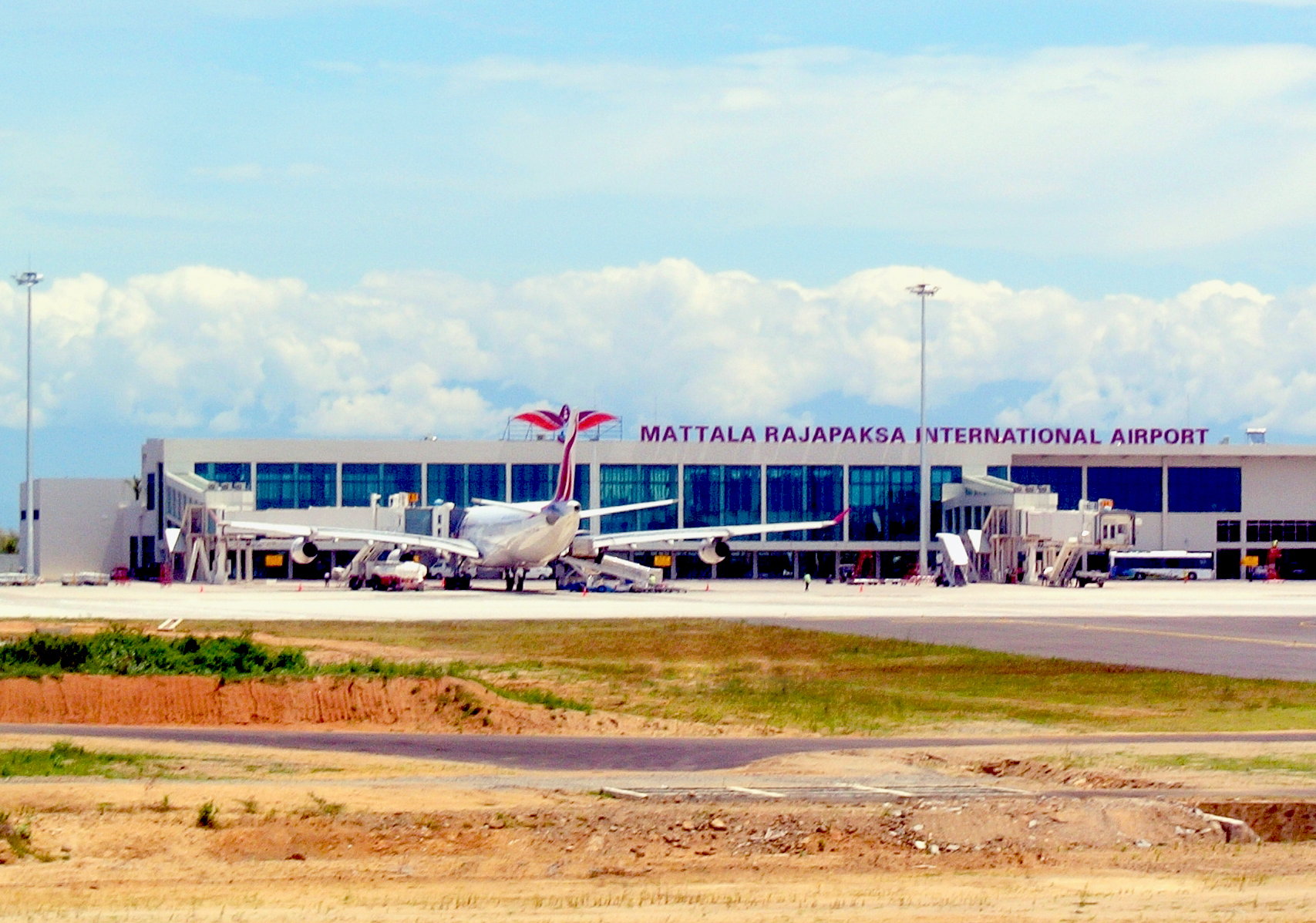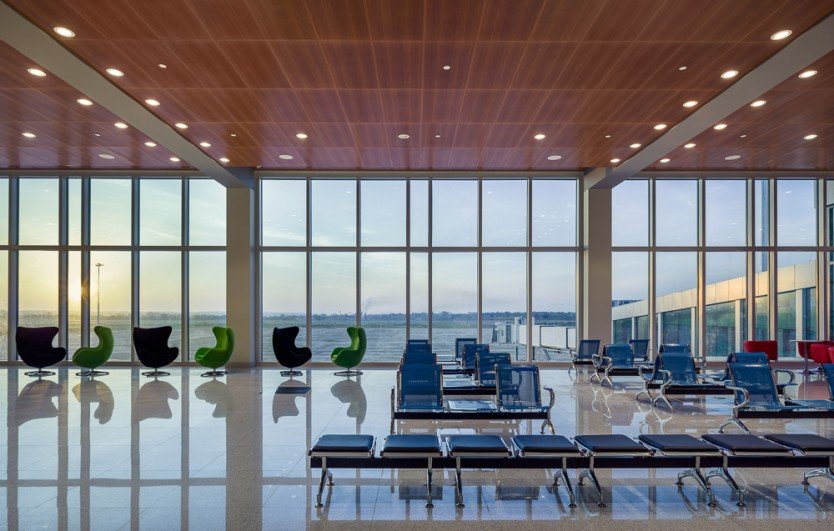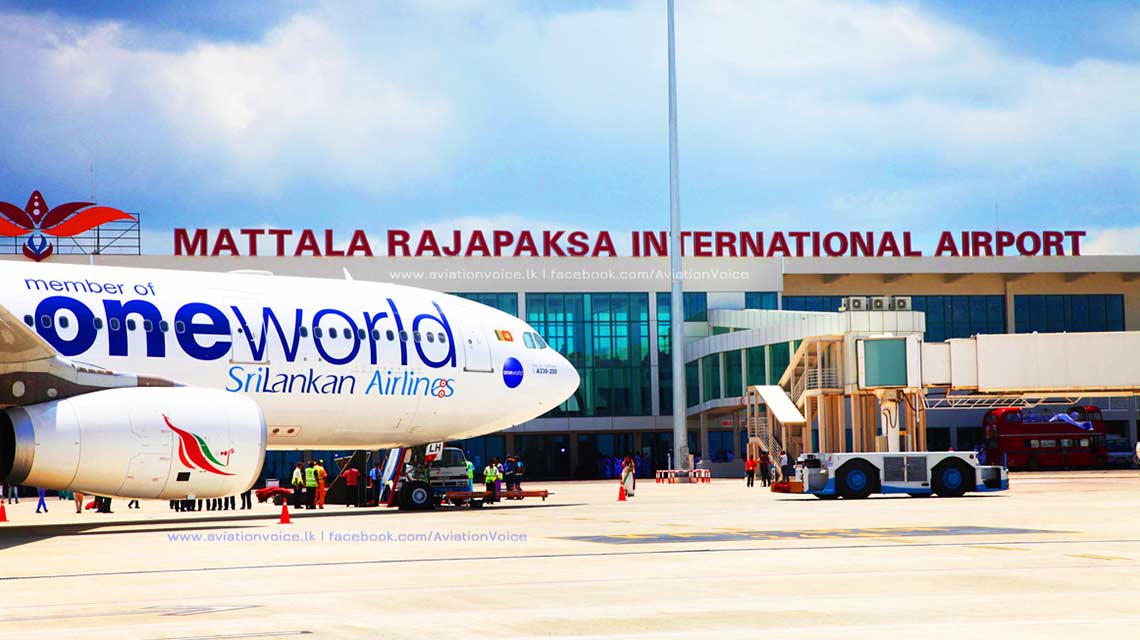The Story Behind The World’s Emptiest International Airport
Hardly anybody goes to Sri Lanka’s Mattala Rajapaksa International Airport (HRI) because they have a flight. No, the air transport hub is currently a daily flight or two away from being completely defunct, and the people who do go there tend to be tourists making a side trip from the nearby wildlife parks to see the stunning, fully modern airport in the middle of the jungle for themselves.
I arrived at HRI, which is located in Sri Lanka’s southern Hambantota district, in the mid-morning to find a group of tourists huddle together in front of its passenger terminal. I asked them why they wanted to visit an empty airport.
 “It is a really beautiful building,” one of them told me matter-of-factly.
“It is a really beautiful building,” one of them told me matter-of-factly.
This airport is a landmark, a sign of progress in this region of Sri Lanka, which is located in a forested area a 250 kilometer drive from Colombo. The airport has a 12,000 square meter terminal building, 12 check-in counters, two gates, a runway long enough to handle the largest commercial jets, and capacity for one million passengers per year.
I paid the negligible cost of admission and walked in through the main entrance. A great hall, naturally brightened by massive windows, led me to a giant statue of Guan Yin, the bodhisattva of compassion, which sits right at the heart of the terminal. As I walked, my footsteps echoed through the building. There were few other sounds — no flight announcements over the PA, no passengers yakking on their cellphones, no taxi drivers trying to solicit a fare. The high-ceilinged corridors were absent of any visitors, except for myself.
Other than that, everything looked as an airport should: the information booth was fully staffed with three sharply dressed young women, security guards were at their posts, cleaners were scrubbing the floor, the souvenir shops glistened, and a small cafeteria had a cook and a cashier dutifully at work. This airport was fully in service, despite the lack of a viable reason for it to be.
The story as to how this airport rose and fell is a dive into a quagmire of national politics, geopolitical maneuvering, raw corruption, and the hunger of China to invest in massive infrastructure projects along what has subsequently been dubbed the 21st Century Maritime Silk Road.
It was long understood that Sri Lanka needed a second international airport. Traffic through Colombo was getting too heavy and the country was in the active process of trying to develop its hinterlands to curb the social and economic disparity that was growing between the nation’s capital and everywhere else. At a cost of $209 million, $190 of which coming in the form of loans from China, Mattalla was selected as the site for the country’s number two air transport hub.
However, the master plan was much broader than just this airport alone. The idea was that Hambantota would be transformed into Sri Lanka’s second most prestigious city. It would become a place built on international trade and commerce, that would be full of joint ventures, FDI, and everything a modern city could desire. In addition to the international airport, there would be a gargantuan, $1.4 billion-plus multi-stage deep sea port, a large industrial zone, a massive conference center, a world-class cricket stadium, housing developments, and a hotel and tourism area all held together by some of the best new highways in the country.

“It was the government itself that felt that if you want to really get it off the ground you have to bring all of these elements together in a very ambitious way,” Dushni Weerakoon, a researcher at the Colombo-based Institute of Policy Studies, explained the logic behind the project. “They were going to put up off-shore a kind of mixed development project, so you fly in and everything is there that you want: the conference facilities, the golf courses . . .”
The fact is that this area didn’t have any semblance of a head start, being little more than a series of small fishing villages and forests, didn’t seem to faze its builders. This city of the future would be constructed, brick by brick, up from scratch. The reasons why Sri Lanka chose such an unlikely place for this new urban conurbation, rather than further developing an already established city, was the simple fact this was the home region of then-president Mahinda Rajapaksa.
“The airport, I feel the location is wrong,” said Deshal de Mel, a senior economist at Hayleys Plc in Colombo. “So I don’t see that being viable any time soon. To have an international airport you need to have a resident population, you need to have attractions to make foreigners want to come there, and you need some commercial infrastructure. They just don’t have it in Hambantota.”
Hambantota was to become the shining achievement of the Rajapaksa regime, and the nomenclature of the area’s big projects do not conceal this fact in any way. Mattala Rajapaksa International Airport is complemented by the nearby Magampura Mahinda Rajapaksa Deep Sea Port as well as the Mahinda Rajapaksa International Cricket Stadium. This was a president who for nearly a decade virtually ruled as a dictator, appointing his family members and friends to positions of power and keeping the country in a very firm grasp. At that time, it seemed only natural that he would name some of the country’s biggest undertakings after himself.

In terms of funding this series of massive projects, Sri Lanka had to look beyond its borders. However, due to soured relations with the West, which included the turning off of economic concessions and aid from the EU and United States due to accusations of war crimes during the later stages of the country’s decades long civil war, Sri Lanka was forced to find a new donor. Fortunately for the Hambantota dream, China was more than willing to fill the void. At least US$4.8 billion, mostly in the form of soft loans, were allocated from China during Rajapaksa’s reign.
It is Sri Lanka’s geographic position which is of interest to the upstart superpower from the east. The island nation sits in the center of the Indian Ocean, a region which boasts 25% of the land, 40% of the oil and gas reserves, and a third of the population of the planet, as well as lying right on China’s primary supply route of crude oil from the Middle East and Africa. Sri Lanka was to become a major hub along the 21st Century Maritime Silk Road, a series of interconnected, Chinese run/invested ports stretching from the Yangtze and Pearl River Deltas through Southeast Asia, across the Indian Ocean, up the coast of Africa, and through the Suez Canal to Greece. This initiative has more descriptively been referred to as the “String of Pearls” by the US Department of Defense, as it can be visualized as a series of maritime nodes stretched over the clavicle of Eurasia.
In March of 2013, Mattala Rajapaksa International began receiving commercial passenger flights.
“At the beginning, we had seven flights [per day],” a manager at the airport told me. “From here to Colombo we had two flights. It was full of passengers. Even the staff members, we couldn’t book a seat. That meant it was fully packed.”
While many of the flights were technically full, most of the traffic was for transit passengers, with local demand from Hambantota being almost non-existent, as SriLankan Airlines later admitted. In 2014, as many as 3,000 flights served just 21,000 passengers at the airport.

Against all fiscal reasoning, SriLankan Airlines, the country’s flagship carrier, was pressured into operating a hub at Hambantota by President Rajapaksa, who strategically positioned his brother-in-law as the airline’s chairman.
The manager told that the airport’s original 600 person staff had been cut down to 300 and that there were only 10 to 20 passengers per day.
At the time when I was there, the airport only had one scheduled daily flight and one weekly flight, operated by Fly Dubai and Abu Dhabi’s Rotana, respectively. While both of these flights touched down in Colombo each way it was not possible for passengers to fly on them direct to or from Mattala.



















